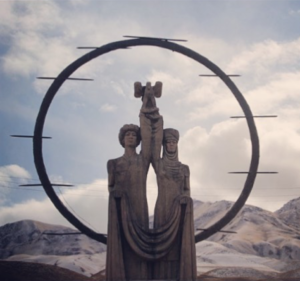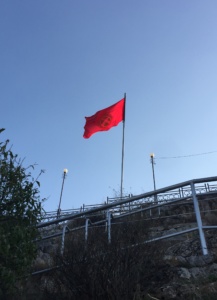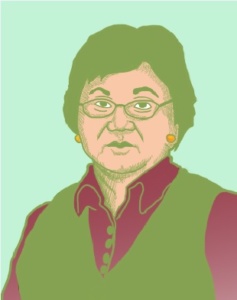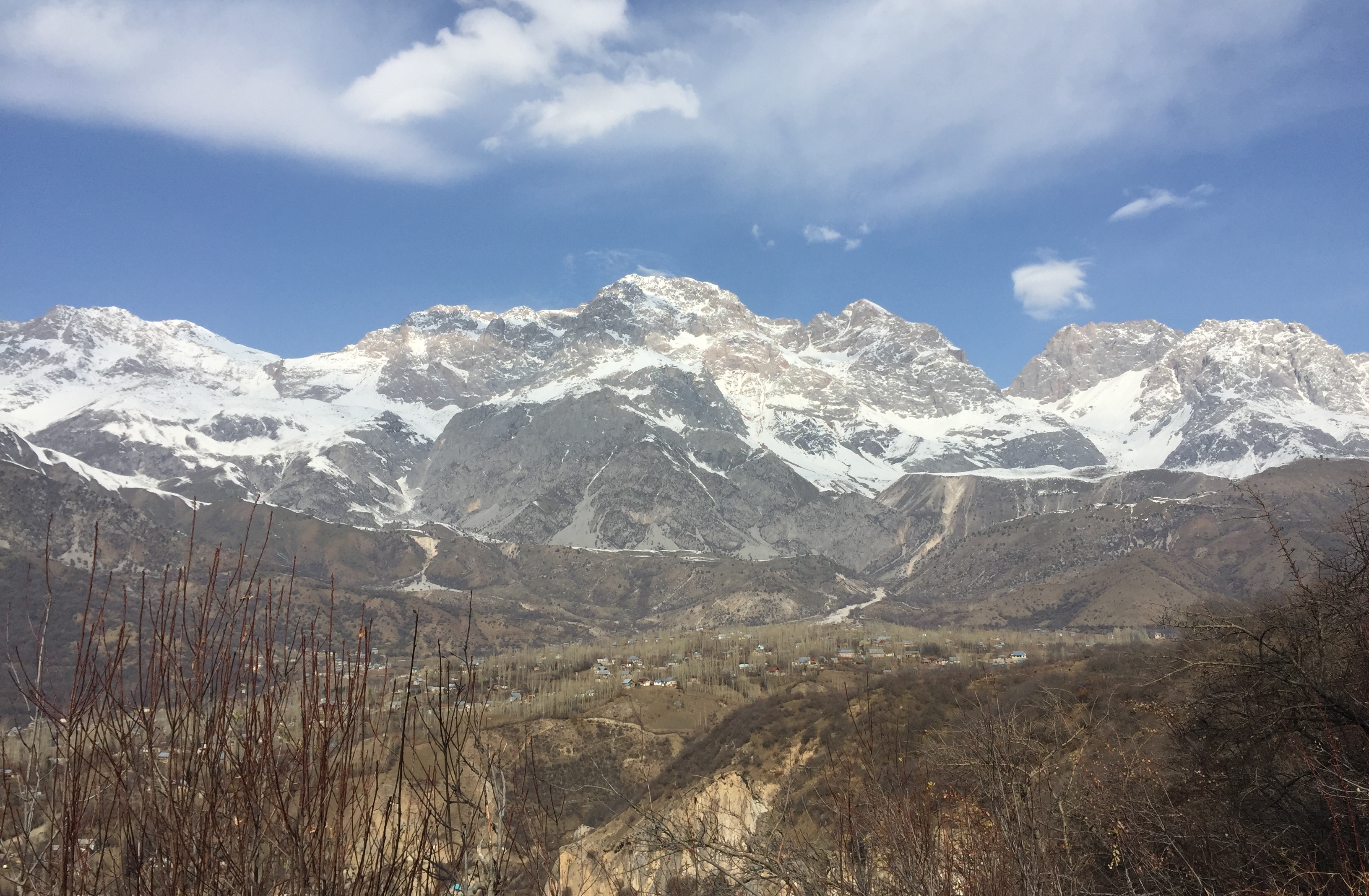Welcome to the first blogpost in the miniseries about the roles of women in Kyrgyz national identity!
This post will be dedicated to clarify some concepts, such as national identity and gender, and shortly explain how and why they relate to each other. I will present a few theories of how national identity is constructed and maintained, to elaborate on my first out of three questions presented in my introductory post:
- What has been central in the construction of Kyrgyz national identity post-independence?
What is National Identity?
The understanding of a nation can be manifold. Several scholars from many different disciplines, particularly post-World War II, have explored this phenomenon of human belonging. One popular list of characteristics of a nation comes from an infamous ruler of the Soviet Union – Josef Stalin – who previous to his rule were considered an expert on the “national question” in the Bolshevik party. He defined a nation as follows:
“A nation is a historically evolved, stable community of language, territory, economic life and psychological make-up manifested in a community of culture.” (Stalin in Yuval-Davis, 2011: 70)
With this, Stalin tried to strictly establish the essence of a nation and his definition has played a major role in Eastern and Central European politics during the 20th century. Other scholars have developed much more inclusive lists of characteristics; however, these have outlined how a nation takes form in discourses rather than pinpointing an ‘essential nation’.
According to Nura Yuval-Davis, identity consist of “stories people tell themselves and others about who they are (and who they are not)” (Yuval-Davis, 2011: 20). These stories, or narratives, are part of the process of putting up boundaries made to include and thus necessarily exclude. Importantly, national narratives are not only expressed through words, but also in practices, traditions, clothes and media. National identity is the perception of shared narratives, stories of a common origin and/or direction for the future and should thus be explored through looking at what is required of a person to be part of that collectivity (Yuval-Davis, 2011: 24) – in this case, the Kyrgyz nation.
… So, What about Gender?
Gender is the social construction, as opposed to the biological dimension ‘sex’, of what a man or a woman is perceived and expected to be according to societal standards. The idea of the nation, no matter which, is also a social construction which is made up of different elements defining its boundaries, including the territorial boundaries which is set up by ruling elites. Different collectives (peoples, nations, or even families) have hegemonic ideas on what a man versus a woman looks like and is capable of. An example of this, is common in most discourses when a country enters interstate war. The soldiers,

typically male because of the idea of they being more aggressive and competitive than females, have to protect the (Mother) nation and the women. Women are generally made to embody the nation’s present and future in terms of biological and cultural continuation. Ethnicity, especially since globalization, has become increasingly intertwined with nationality and not surprisingly, women being child bearers are usually seen as responsible for the (pure) biological reproduction of the nation. A Kyrgyz example of this would be the discussion a few years ago on introducing a law, which would forbid unmarried women under age 22 to leave Kyrgyzstan (Suyarkulova, 2016: 251). Women as child rearers become responsible for the nation’s sociocultural future through the raising of their children (Yuval-Davis in Suyarkulova, 2016: 250 ff.; Ismailbekova, 2016) and in Kyrgyzstan women are much treasured as the hearth of the home and are expected to take care of the children as soon as they marry into another family (Ismailbekova, 2016).
Even though these tasks are highly valued, being assigned these tasks in combination with negative stereotyping of femininity (emotional, weak, fragile) puts women in peculiar positions that often results in them being portrayed as possessions of the nation, symbols of national dignity and honor, vulnerabilities or even “nationalist wombs” (Enloe in Suyarkulova, 2016: 250). This suggests measures relating to the ‘need’ for protection of and control over women, often disguised as being for women’s safety and for “their own good”.
Kyrgyz National Identity in the post-Soviet Era
Successful state building is only possible with a strong nation at its base. This is the basic idea which has been promoted by the political elite in Kyrgyzstan during the 21st century. Accompanied by demographic trends post-independence with the dramatic decrease of minority groups, ethno-nationalistic policies and discourses have prevailed (Wachtel, 2016: 7) much to the cost of marginalized groups’ and women’s access to decision-making processes (Suyarkulova, 2016; Wilkinson, 2015: 418-419). Age and gender have always been important identity markers, defining access to rights, power, and authority, and since independence ethnic belonging has become increasingly important. Suyarkulova (2016: 257) writes in regards to this: “In late-Soviet and post-Soviet periods, a search for a more authentic national identity has meant a promotion of patriarchal norms in the public and political spheres and in religion”. Thus, it becomes crucial to investigate what influences the ideas of ‘authentic’ Kyrgyz ethnicity, keeping in mind the Soviet legacy of multi-ethnic demography and interdependence in the Central Asian region.

A famous slogan of the first President Askar Akayev of the republic was “Kyrgyzstan – Our common home”. Akayev tried to strive towards a multiethnic ideal, but his slogan has become in this framework of ethno-nationalism an idea of ethnic Kyrgyz as masters of the home and hosts to minorities. As such ethno-national elite take pride in being inherently good and tolerant towards non-Kyrgyz people without necessarily allowing them any share of the power (Wilkinson, 2015), which is reflected in the lack of non-Kyrgyz voices in the political and public spaces (Beyer, 2015). Not to forget that the Russian and Ukrainian minorities in Kyrgyzstan are relatively well off financially in Osh and Bishkek (where most of them resides), however, their official political interests in Kyrgyz politics are considerably low-key.
Another central influence on Kyrgyz identity is religion, specifically Islam. The vast majority of the citizens of Kyrgyzstan today identify as Muslim, seemingly by virtue of their (Kyrgyz) ethnicity (Fumagalli, 2015: 364). Partly because of their Soviet-heritage and partly because of tensions with neighboring countries and peoples, the official state-level national identity construction has kept Islam at an arm’s length. Generally, Kyrgyzstan has found it easier to identify with ethnic Russians than with the broader Muslim world (ibid.), and this is somewhat reinforced by close ties to Russia through politics and migration. However, Islam as an identity marker on a private level is not uncommon, especially in the continuous negotiations on gender and gender relations (Handrahan, 2001; Ismailbekova, 2016), which will be elaborated on in the second part of this miniseries.
Exploring the Nomadic Past
What is perceived to be somewhat in contrast to religion and more celebrated in terms of historical heritage (and thus part of national identity) is nomadism (Handrahan, 2001; Suyarkulova, 2016; Wilkinson, 2015). The contrast between Islam and the nomadic past of the Kyrgyz can be found in the contested theory of “nomadic exceptionalism”. Nomadic exceptionalism proposes that nomadic women were less oppressed than other, in this case, Muslim women. However, in the case of Kyrgyzstan, nomadic women still lacked basic property, political and civil rights, and were subjected to codes of honor and modesty, similarly to other women in the Central Asian region (Suyarkulova, 2016). In regards to this, the celebration of nomadism risks masking the problems occurring when trying to return to values and behaviors which were suffocated by external forces over 70 years ago. Lori M. Handrahan (2001: 477), Ph.D. and gender consultant, commented 15 years ago, after the release of a report from Amnesty International, that the
“[…] resurgence of tribal norms in modern life results in patriarchal and often barbaric, rule by terror, resplendent with human rights violations rather than civil society and progressive stability […]”.
Even though Handrahan is quite pessimistic, she does highlight an important point. Nomadic kinship is based on patrilineal descent – in other words, men become highly valued in continuing the ‘authentic’ Kyrgyz bloodline (Handrahan, 2001: 477 ff.), which leaves young women with a pressure on birthing sons. Men are also granted access to power and decision-making over their community on the basis of their age and gender, for example through so called Aksakal courts (White Beard courts), which have been known to penalize through the use of whipping and stoning (ibid.). Clans and tribalism has been pinpointed as a facilitator of corruption and uneven distribution of wealth among the political elite and public spheres in Kyrgyzstan. Additionally, the tradition of ala kachuu (forced marriage through abduction of women), which has increased significantly in the 21st century despite criminalization, is an originally nomad practice even though it is often masked as religious (ibid.).
Lastly, I want to make a note on symbols of ‘Kyrgyzsness’ which has gained popularity post-independence (which does not mean they were not popular before). Roza Otunbaeva, the first female Central Asian president, is said to have popularized ‘ethnic Kyrgyz’ clothing for women when she became a renowned public figure (Suyarkulova, 2016).

Today, in contrast to pre-independence, it is common to see women dressing in vests and dresses that are considered traditionally Kyrgyz, and women are often veiled in a particularly Kyrgyz way, which differs from the Muslim. Another interesting attire is the Ak Kalpak, which is a hat men wear in order to make claims to status and masculinity in a traditional sense. The most worn type today were designed and popularized by Soviet designers around the middle of the 20th century. Yet, this hat is an important identity marker, said to remind of brave young horsemen (jigit) and an honorable Kyrgyz past (Suyarkulova, 2016). The horse is also a symbol central not only to Kyrgyzstan, but to the whole region, and is closely connected to the performance of Kyrgyz masculinity. The horse serves as means of transportation, nutrition and entertainment connected to status and the internal clan conflicts in the past.
Until Next Time
Performances of ‘Kyrgyzsness’ through such narratives as clothing and traditions presumes there is such a thing as a common Kyrgyz identity, which is interesting particularly bearing in mind that there are general ideas about a significant difference between Southern and Northern Kyrgyzstan in terms of language, religion, attitudes, and behaviors. However, there seems to be a need to unify the Kyrgyz people at least towards a common future, and not merely getting stuck in the past. In this sense, the creation of a common Kyrgyz narrative cannot be reduced to being merely destructive, and it surely is understandable considering a history of colonialism and external oppression. The question is, how can Kyrgyzstan construct a national narrative which celebrates ‘Kyrgyzsness’ without regressing in terms of the rights of minorities and women?
Remember, these blogposts are one attempt at analyzing very complex phenomena, and thus I want to urge you to read and explore the topic on your own if you find it interesting! I have provided a list of research used in this article, to offer a start in extending your knowledge on Kyrgyzstan and nation-building.
Until next time!
Written by Isabelle Persson, based in Osh, Kyrgyzstan.
Sources:
Beyer, J. (2015). “Constitutional Faith Law and Hope in Revolutionary Kyrgyzstan”. In: Ethnos – Journal of Anthropology, 80:3, pp. 320-345.
Fumagalli, M. (2015). “Stateness, contested nationhood, and imperiled sovereignity: the effects of (non-western) linkages and leverage on conflicts in Kyrgyzstan”. In: East European Politics, 32:3, pp. 355-377.
Handrahan, L. M. (2001). “Gender and ethnicity in the ‘transitional democracy’ of Kyrgyzstan. In: Central Asian Survey, 20:4, pp. 467-496.
Ismailbekova, A. (2016). “Constructing the authority of women through custom: Bulak village, Kyrgyzstan”. In: Nationalities Papers – The Journal of Nationalism and Ethnicity, 44:2, pp. 266-280.
Suyarkulova, M. (2016). “Fashioning the nation: gender and politics of dress in contemporary Kyrgyzstan”. In: Nationalities Papers – The Journal of Nationalism and Ethnicity, 44:2, pp. 247-265.
Wachtel, A. (2016). “A Tale of Two Heroes: Kyrgyzstan in Search of National Role Models”. In: Region: Regional Studies of Russia, Eastern Europe, and Central Asia, 5:1, pp. 1-16.
Wilkinson, C. (2015). “Imagining Kyrgyzstan’s nationhood and statehood: reactions to the 2010 Osh violence”. In: Nationalities Papers – The Journal of Nationalism and Ethnicity, 43:3, pp. 417-436.
Yuval-Davis, N. (2011). The Politics of Belonging. Los Angeles, London, New Delhi, Singapore, Washington DC: SAGE Publications Ltd.

